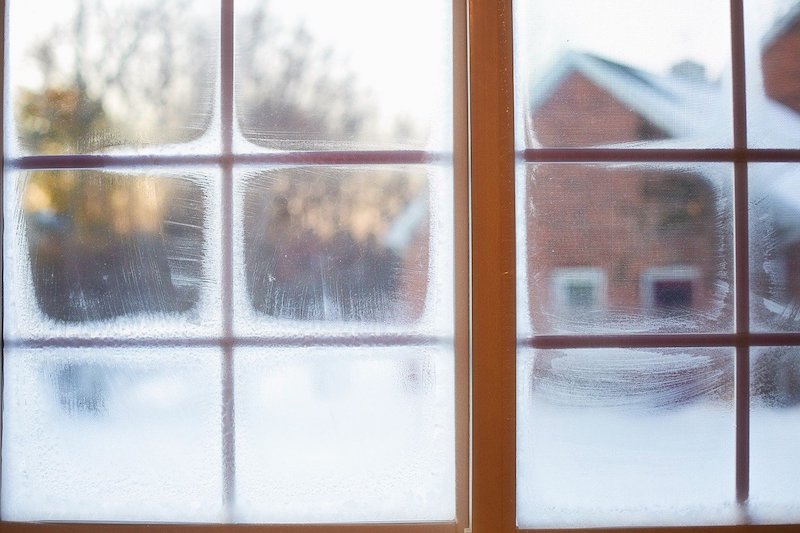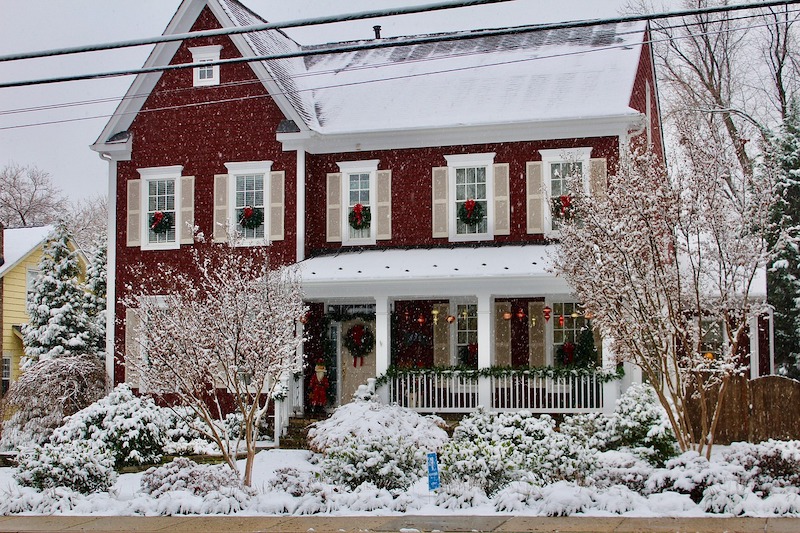Waking up on a cold winter morning and seeing frost on the inside of your windows isn’t just a sign of the season, it’s actually an indication that something is amiss. That’s right, that charming frost on your windows may not be so charming after all. It can blur your view, harm your windows, and even lead to mold and mildew growth.
But don’t panic! It just means your windows need some attention or possibly need replacing.
Fortunately, there are effective ways to keep frost at bay and maintain a clear and comfortable home environment. In this guide, we’ll delve into why frost forms on windows, and how to prevent it. With a clear understanding of the causes and preventive steps, you can enjoy clear and frost-free windows all year round.

Why Does Frost Form on Windows?
When it’s cold outside and there is moisture in the air inside your home, the moisture is drawn to the windows, forming frost. In Atlanta, we’re no stranger to humidity, so it’s no surprise that frosty windows are an issue.
Frost is most common on single-pane windows. Single-pane windows have just one pane of glass, which means it lacks insulation. These windows were very common up until recent years so if your home is older than 15-20 years old, you likely have this type of window. But even if you have double-pane windows, you may still see frost if the seals on your windows are broken.
Why is Frost on Windows a Problem?
As we mentioned, window frost may look charming, but it’s actually not good for your home.
First, it’s a sign that your windows are no longer energy-efficient. When your windows are energy-efficient, exterior temperatures don’t impact your windows or the temperatures inside of your home. Ice or frost on windows is a sure sign that cold air is getting in, and warm air is escaping.
Second, when the frost melts, the water drips onto your window sills and walls. In addition to damaging your walls or window sills over time, this water can lead to mold or mildew around your windows. Mold and mildew are dangerous and can be extremely expensive and time-consuming to get rid of. (And in Atlanta, any mold that started in the winter will flourish in our hot, humid summers.)
In severe circumstances, these extreme temperature changes can actually damage your windows by causing shrinkage or warping. This can lead to gaps around your window frame, which is another way cold air seeps in and warm air escapes.
With all that in mind, let’s talk about how to prevent frost on the inside of your windows.

How to Prevent Frost on the Inside of Your Windows
The most effective way to prevent frost on your windows is to replace them altogether. With professionally-installed replacement windows, you can be sure there are no gaps or areas where air can escape. In addition, the layer of insulation offered by double-pane windows keeps your home more comfortable and prevents window frost.
While you wait for your replacement windows to be installed, here are a few steps you can take to prevent ice from forming on your windows:
- Make sure your windows are properly caulked and there are no gaps between the frame and the wall. Any gaps will only allow more cold air in, dropping the temperature of the room and increasing the chances your windows will develop frost.
- Keep your home warm in the winter so ice won’t be able to form on the inside of your windows. Space heaters can be used in rooms that don’t get enough heat from your HVAC unit or that seem prone to window frost.
- Open your curtains and blinds to allow for proper airflow. Heat may not be able to reach your windows if they’re blocked by window coverings.
- Use a dehumidifier in rooms that tend to get a lot of window frost. By removing the moisture from the air, you’ll stop the development of ice in your windows.
Controlling indoor humidity levels is also important in preventing frost. High humidity can cause condensation on windows, which can freeze and form frost. To reduce humidity, use exhaust fans in bathrooms and kitchens, and consider a dehumidifier in areas with excessive moisture.
Along with good insulation and humidity control, proper ventilation is key. Stagnant air can lead to condensation and frost. Open windows to allow fresh air in, and use ceiling fans or portable fans to promote air movement. This helps prevent moisture buildup and maintain an even temperature.
Frost Proof Your Windows With Window World of Atlanta
At Window World, we offer a variety of energy-efficient window styles to match your home’s design and your needs. At your free consultation, our window experts will help you find the best windows for your home. Get started by requesting your consultation today!